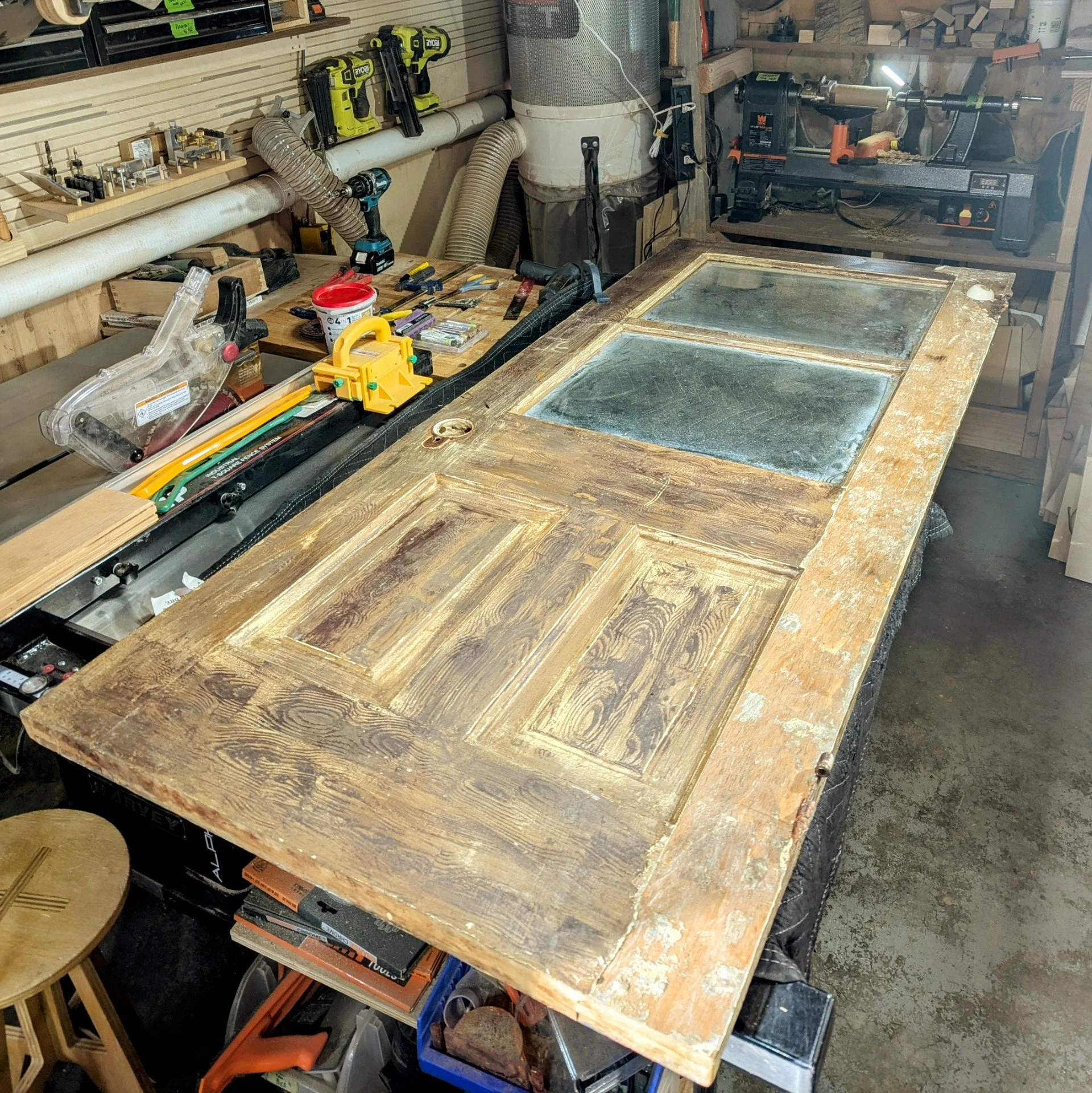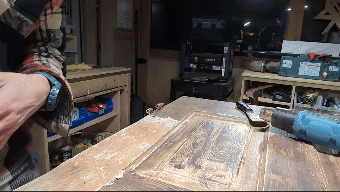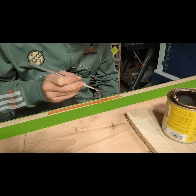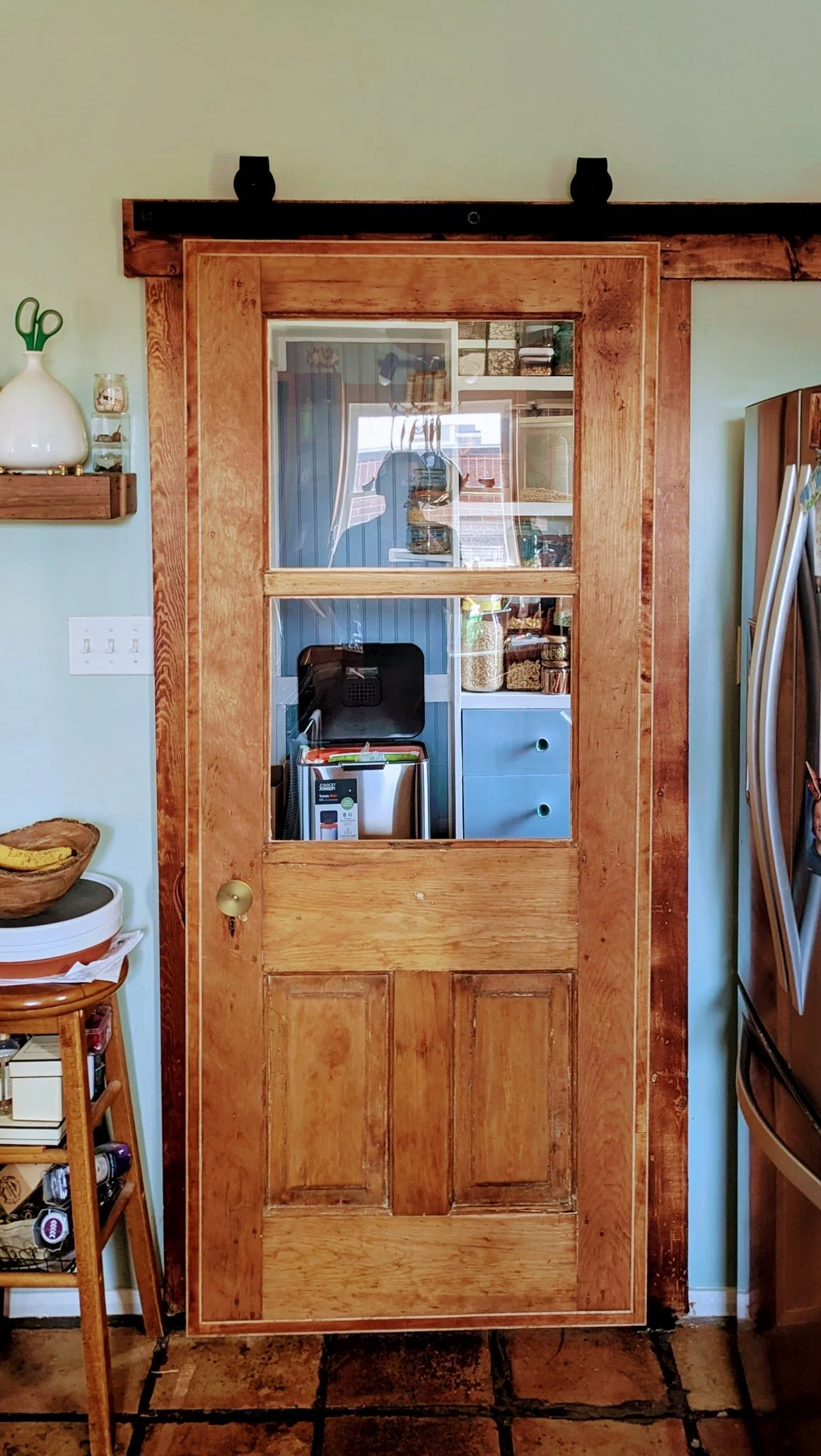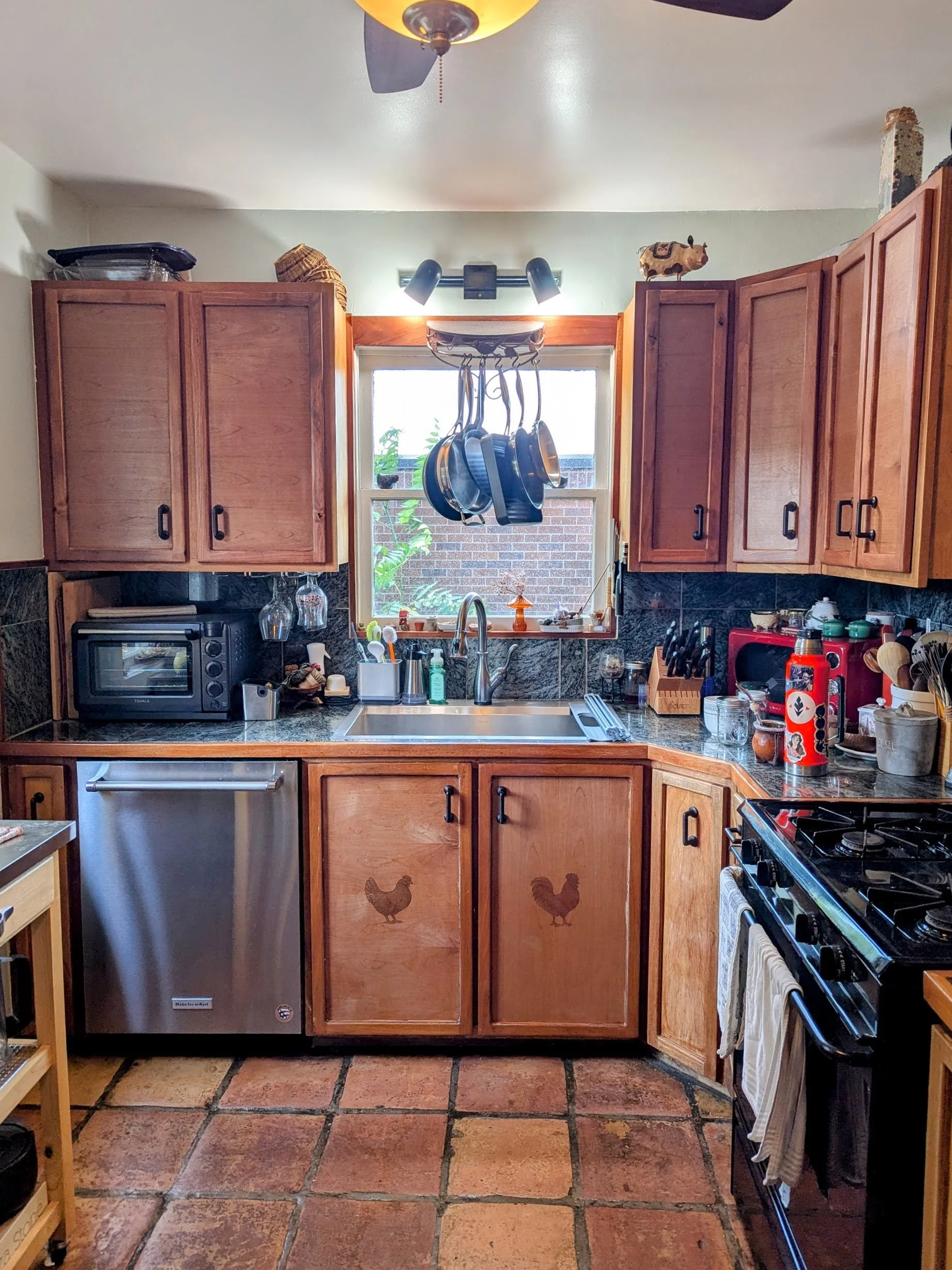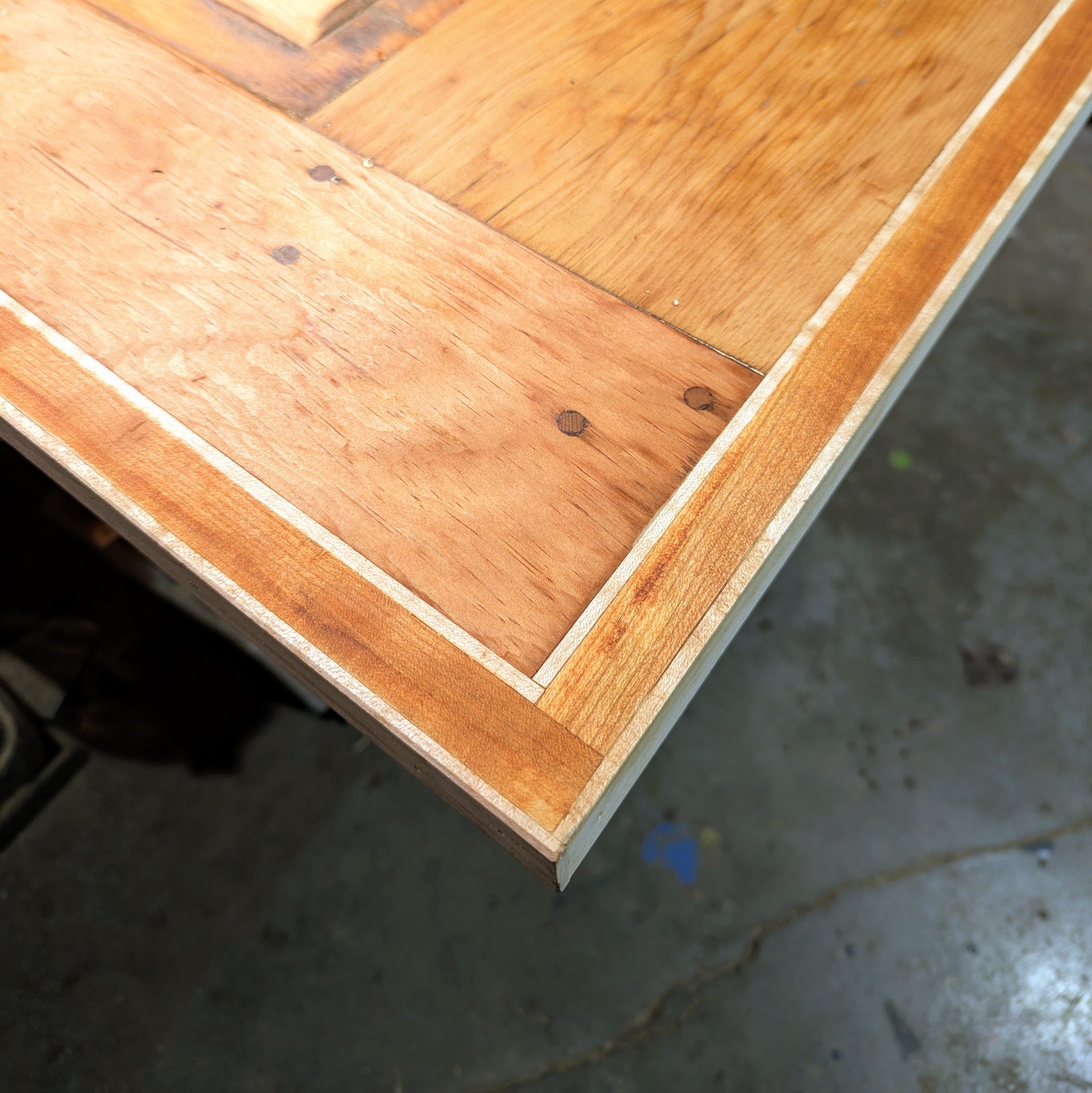
When Yamile reached out, she spoke passionately about her kitchen—a space full of memories where she’s created countless meals and moments. She didn’t want a full remodel; she wanted to highlight its beauty while letting go of what no longer worked.
The project involved adding doors to unfinished shelves, replacing worn ones, and converting a hinged door into a sliding barn door. As I worked on the door, I discovered layers of paint meant to mimic aged wood, ironic because the door itself was already old wood. Stripping the paint revealed its history—each layer representing a period in the house’s life. This wasn’t just a renovation; it was about giving the kitchen a fresh season while honoring its story. By removing the excess and letting the natural wood shine, we brought new life to a beloved space.
When I first took on this project, I thought it would be a straightforward job—revitalizing a kitchen while preserving its charm. But that perception changed the moment I started working on the door. It had been painted layer upon layer to mimic aged wood, which was ironic because it was already made of beautifully aged pine. As I stripped away the paint, I realized that each layer told a story, like the rings of a tree marking different seasons in the house’s life. This project wasn’t just about fixing a door—it was about revealing history and giving the kitchen a new season while honoring the past.
But then, we hit another challenge. To transform this old beauty into a sliding barn door, it needed to be slightly larger—like resizing a digital file. That’s when Yami’s husband (his official title, though sometimes subtitled Gaia’s Dad) casually suggested, Why not frame it like a picture? And without thinking for more than two minutes, I said, F* it, that sounds awesome.**
So I built a three-layer frame—two layers of maple and one of cherry—surrounding that old pine. It was way more work than I anticipated, but the result was worth it. Then came another hurdle: the color. The cherry needed to darken while the maple stayed light, but stain bleeds, so painter’s tape wasn’t an option. That’s when I channeled my inside-the-lines skills from pre-K, grabbed an old brush, and carefully hand-painted that cherry with patience and precision.
To tie it all together, I cooked up a rich, chocolatey-smelling hard wax paste that spread like butter. And finally—it was time to install. It went about as smooth as you could hope for: a few minor hiccups here and there (it’s still a house, after all), but nothing major. The door looked fantastic in its new role. It brought a beautiful visual separation between the two spaces, and, best of all, it finally allowed the fridge to be turned the way it always should have been—for the first time in years.
After all the hours and detail that went into this door, I might be getting a little too attached. But hey, when a project surprises you and turns out better than expected, it’s hard not to.
After the barn door, the only pieces left were the little doors—the cabinet doors—and their handles. When the original house was rebuilt, whoever made the kitchen never actually finished it. The cabinets were left open, without doors. And to make things worse, Yamile and Luis had never liked the old handles—they caught on clothes, were awkward to use, and just didn’t fit the space.
So we had two design puzzles to solve.
First, we needed to match the construction of the original doors as closely as possible. That was tricky, because the person who built the kitchen clearly wasn’t a professional. There were structural inconsistencies we had to not only work around, but subtly improve—without calling attention to the fixes.
Second, we wanted to bring the kitchen up to date, just a bit. Not a modern overhaul—this was a revitalization. So we played with wood choices and proportions, eventually settling on aliso (alder), a very workable wood that closely resembles the old pine of the existing kitchen. Anything fancier or flashier would have clashed. Alder gave us just the right balance: clean, subtle, and warm.
The real star of this stage? The handles. We found a set that not only feels great to use (no more snags or awkward pulls), but also adds a touch of that bohemian chic vibe that defines Yamile and Luis’ home.
Once the doors were in and the new handles installed, the kitchen felt—finally—complete. We know this is a project within a larger one (Luis dreams of expanding the house with a second floor), but for now, it feels just right. There's one last piece in the plan to fully revitalize the space: replacing the front kitchen door. That one is too far gone to restore like we did with the barn door—it's ready for something new.







